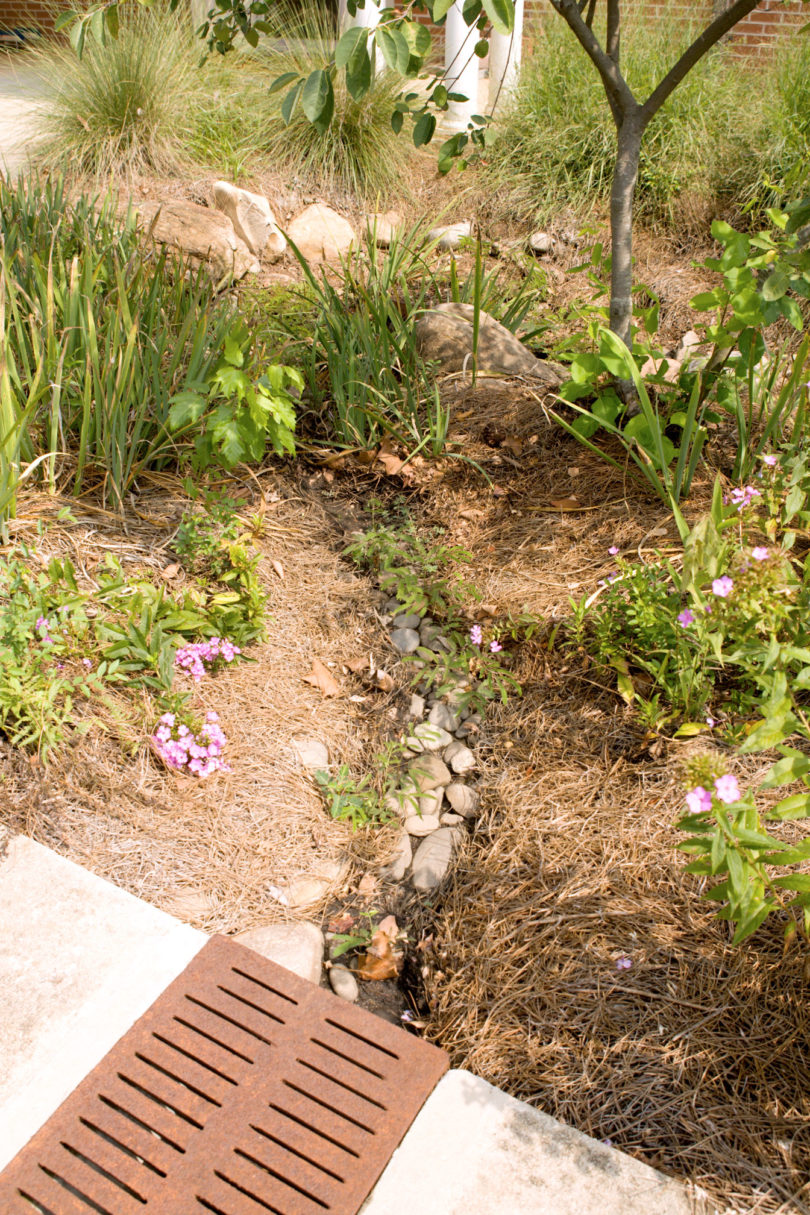When it’s dry, the rock-filled swale in front of the physical plant grounds department office looks like leftovers from a construction project. But when rain sends water from nearby roofs and a parking lot flowing into the depression, it becomes a showpiece for a popular concept in stormwater management known as a raingarden.
Part reservoir, part filtration system, raingardens are a smaller version of what are also known as detention ponds. Like ponds, raingardens catch rain runoff from impervious surfaces such as asphalt and concrete, helping keep the water out of conventional drainage systems such as sewers. But raingardens-technically known as “bioretention cells”-can do more. They help cleanse water before it goes into the ground or into a drainage system. They also beautify landscapes and can improve safety by reducing flooding and standing water.
Expect to see several of them along Lumpkin Street as part of the extensive stormwater and drainage improvement work Athens-Clarke County is carrying out on that busy thoroughfare. UGA will maintain the Lumpkin Street raingardens, and more will be built around campus, says Dexter Adams, head of the grounds department. The garden at the grounds department office was installed as a demonstration to help UGA workers become familiar with them, says Adams.
Basically, a raingarden is a large hole in the ground, several feet deep. Its size is based on the amount of water it’s expected to handle; its shape is aligned with the contours of the surrounding landscape.
The bottom has a “cell” composed of uniform-sized gravel and surrounded with a special porous fabric that allows water through but filters out sediment. On top of the fabric is a layer of organic material such as sandy loam. Above that, on the ground surface, are gravel and rocks of varying sizes that trap water in pockets and release it slowly. An overflow pipe buried in the hole rises about a foot above the rock surface. The garden is surrounded by grass, shrubs, trees and other amenities.
When rain falls, runoff from parking lots, sidewalks, streets, roofs and other surfaces is channeled into the raingarden instead of going down the sewer drain or pooling along the curb. As the water seeps down through the rocks, organic material and porous fabric, dirt, oil and other impurities are leached out and the clean water is absorbed into the ground.
“Rains of an inch or less carry the most concentrated runoff of pollutants, trash and sediments,” says Adams. “For these normal rainfalls, a raingarden will really drink up the water quickly so there’s rarely any standing water.”
The university has a couple of other devices that just hold water, including a berm-like area at the ecology building and a retention pond at the intramural fields.
Raingardens are more expensive to install than conventional sewer drains. But Adams says they pay off in reduced water pollution, stormwater control, improved aesthetics and enhanced safety.
“As an educational institution, we should set an example by using best management practices,” he says. “Physical plant is excited to be working with Athens-Clarke County to take advantage of these new approaches to stormwater management.”








